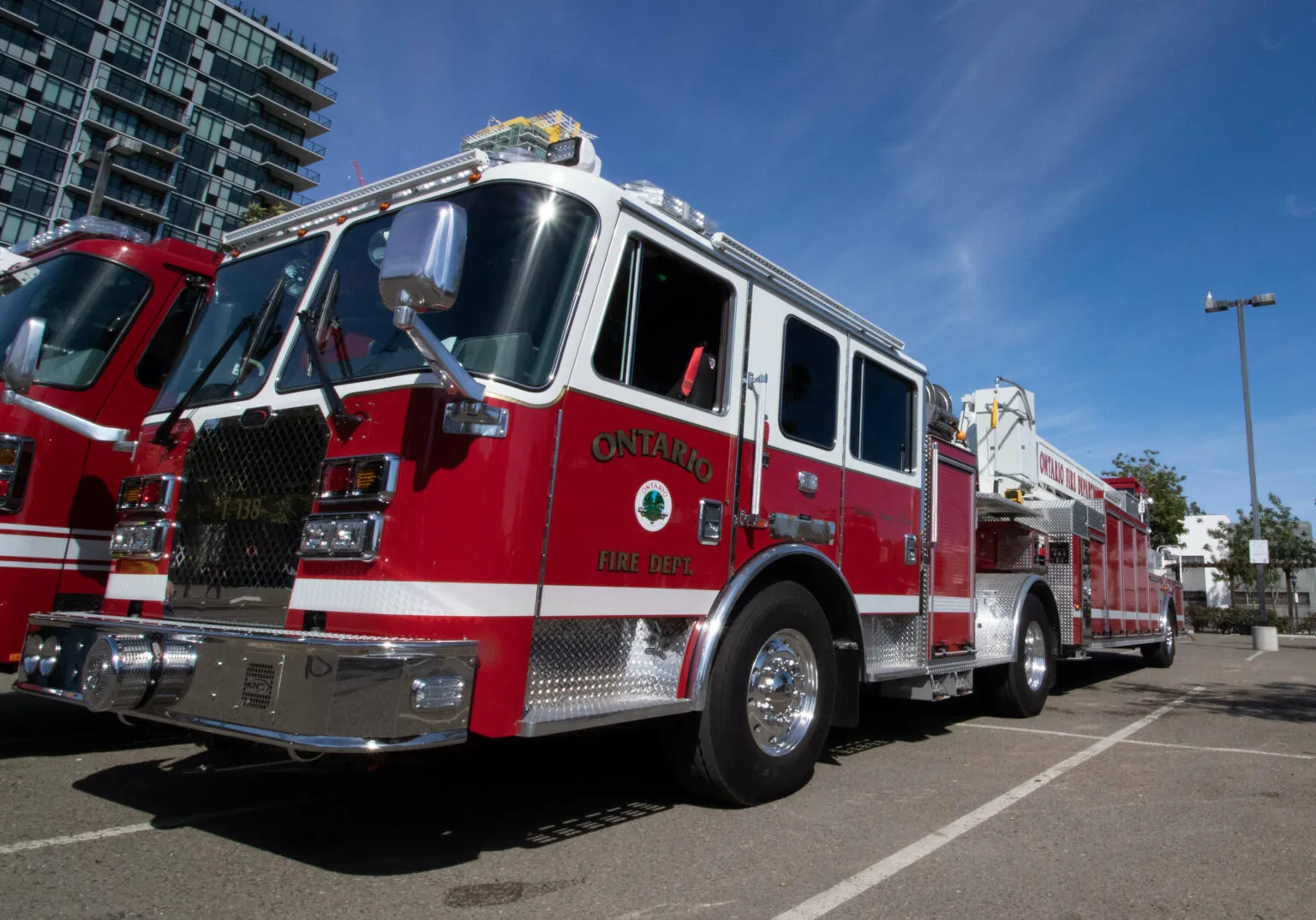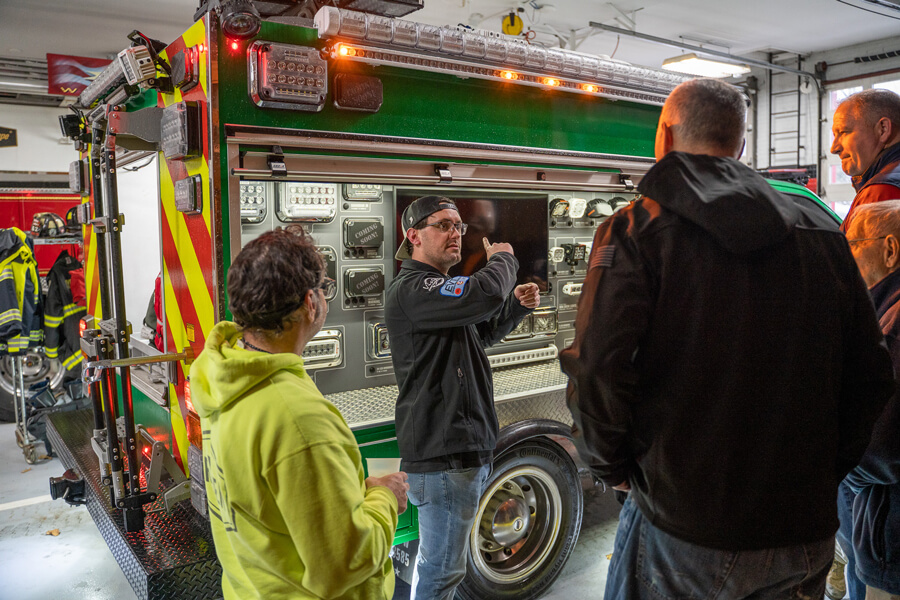I know first responders will back me up here: In emergency response, creative problem-solving isn’t optional. It’s the job.
Every call throws something new at you, and you’ve got to adapt fast. The tools you rely on? They’ve gotta keep up, in all lighting and conditions. Fire doesn’t wait for daylight, accidents don’t schedule themselves for convenience, and when you’re working a scene at 2 a.m., bad lighting isn’t just frustrating — it’s dangerous.
At HiViz, our founder is a Firefighter, EMT, and HAZMAT Technician by training, and over half the company has direct ties to the first responder community. Meaning, many of us have seen firsthand the way emergency lighting was past-due for innovation. For me, if there’s one thing I can’t stand hearing, it’s: “That’s just how it’s always been done.” First responders don’t get to take the easy way out when lives are on the line, so why should the tools they rely on be designed any other way? Sometimes, you have to burn down the old way of doing things (…metaphorically) to build something that actually works.
HiViz LED Lighting does things differently. As a company of first responders, we don’t just make emergency vehicle lights — we solve problems. If something doesn’t exist and you need it, we build it. If something isn’t good enough, we figure out why and make it better — not (just) with fancier tech, but with a real understanding of what actually works out in the field, where it matters.
That insight and readiness to innovate has driven every decision we’ve made, from rethinking how fire truck scene lighting should work to backing our gear with the industry’s only advance exchange lifetime warranty. So, what does this all look like in action? Glad you asked.
Real-World Examples of Creative Problem-Solving at Hiviz
At HiViz, we don’t believe in solving problems from behind a desk. The best solutions come from being out in the field, listening to first responders, and figuring out what’s actually needed — not just what’s available. Sometimes, that means rethinking a product entirely. Other times, it means taking what’s already there and making it work better. Either way, we don’t settle for “good enough.”
Take scene lighting on a fireground. Early into HiViz, a department came to us with a challenge: their light towers were casting shadows inside wrecked vehicles, making it tough for firefighters to see patients. Flashlights weren’t cutting it — they were too hard to angle properly, and half the time, they ended up blinding the very people they were trying to help. We knew there had to be a better way. So, we created a battery-powered, magnet-mounted light that could be placed inside the vehicle, attaching through the headliner to provide even, non-directional illumination. No shadows, no blinding glare — just the right light, right where they needed it. (Granted, in the world of modern aluminum vehicles, this is no longer relevant — but in the early days, it was critical.).
Then there was the issue of firefighter box lights. Departments at that time were stuck between two bad options: keep using outdated, inefficient models, or shell out a fortune for high-end replacements. Neither was acceptable. So, we built the Supercharge Program — an upgrade kit that retrofits existing box lights with light fixtures we produced that were up to 35 times brighter than the 6v halogen lamps they shipped with, giving firefighters the performance they need without forcing departments to drain their budgets.
The result? More light, where it mattered.
Over 15 years, we’ve used this foundation of innovation to keep the evolutions coming, solving even more complex problems with targeted, relevant products that factor in first responders’ true pain points, then solve for them. We don’t rest on our laurels, and we’ve made it a core value to keep creatively solving problems until the people saving lives have what they need.
Why Creative Problem-Solving is a Core Value at Hiviz
Let me rephrase that. Creative problem-solving isn’t just a value at HiViz — it’s truly how we operate. We’re a team of first responders who know firsthand what it’s like to work on a fireground, extricate a pinned patient, or to have to navigate an emergency scene in the dead of night without being able to see. That means we don’t just guess at what you need — we get it. This helps us move fast, adapt even faster, and create solutions that actually work in the field.
Knowing the problems firsthand isn’t enough, though. We also believe in always having a plan, a backup, and a backup to the backup. That mindset keeps us nimble. If an idea doesn’t work, we pivot. If a solution solves one problem but creates another, we refine it. That’s how we ended up rethinking nighttime lighting — not just making scene lights brighter, but increasing ambient lighting on vehicles to improve overall visibility.
We also take a different approach to innovation. Instead of starting with engineering experts, we go to the source and start with the people who don’t know the so-called “rules.” That’s where the most creative, unconstrained ideas come from. Then we ask the question behind the question — what’s the real problem we’re solving?
For us, customer feedback isn’t just helpful — it’s essential. First responders don’t have time to sugarcoat things, and we wouldn’t want them to. This constant loop of direct, honest feedback, rapid prototyping, and iteration helps us make sure we’re solving the right problems the right way.
Impact of Creative Problem Solving on Growth
Creative problem-solving goes beyond developing amazing products — it’s really baked into everything we do at HiViz. From efficient manufacturing processes at the apparatus manufacturers, to our supply chain management, customer service, and operations, we’re always looking for that opportunity to innovate. It allows us to move faster than competitors, adapting to change instead of getting stuck in “business as usual.”
Take the BG2, for example. FDNY came to us with a problem: the ultra-bright lights on their trucks were great for emergencies but blinding when crews were doing routine work. Instead of just dimming the lights, we developed a dual-mode system — a downward-facing optic that creates a soft halo of light for low-intensity tasks, but instantly switches to high-power “go mode” when needed. That single innovation didn’t just solve a problem — it became a major product line.
Looking ahead, we know the industry is shifting. As emergency vehicles move toward automation, traditional flashing lights might not be enough to communicate with other cars on the road. That’s why we’re already thinking beyond visual signals and into digital communication — developing smart systems that integrate with autonomous technology. The future of emergency lighting isn’t just brighter LEDs; it’s intelligent, connected solutions.
For us, innovation isn’t a one-time thing — it’s a continuous process. The challenges first responders face are always evolving, and that means our solutions have to evolve, too. As long as there are problems to solve, we’ll keep finding better ways to help those who run toward — not from — the emergency.
Solving Your Problems With Smart Solutions and Creativity
Innovation isn’t slapping more LEDs onto a truck — it’s understanding the real-world challenges of first responders and designing solutions that make their jobs safer, easier, and more effective.
At the end of the day, this isn’t about us. It’s about making sure our firefighters and EMTs have the tools they need to do their jobs safely and effectively — because when you’re out there in the dark, you deserve better than “good enough.”
It’s why we don’t just sell products; we answer the phone when you call, and we never stop looking for ways to make our lights work harder for the people who count on them.
So, what problem can we help you solve creatively — asking what’s needed first, and what’s possible second? Let’s talk it out.


